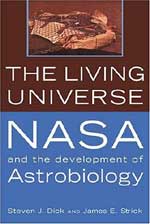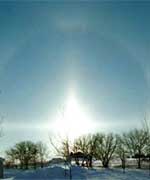In 30 years, a nuclear-powered space exploration mission to Neptune and its moons may begin to reveal some of our solar system’s most elusive secrets about the formation of its planets — and recently discovered ones that developed around other stars.
This vision of the future is the focus of a 12-month planning study conducted by a diverse team of experts led by Boeing Satellite Systems and funded by NASA. It is one of 15 “Vision Mission” studies intended to develop concepts in the United States’ long-term space exploration plans. Neptune team member and radio scientist Professor Paul Steffes of the Georgia Institute of Technology’s School of Electrical and Computer Engineering calls the mission “the ultimate in deep space exploration.”
NASA has flown extensive missions to Jupiter and Saturn, referred to as the “gas giants” because they are predominantly made up of hydrogen and helium. By 2012, these investigations will have yielded significant information on the chemical and physical properties of these planets. Less is known about Neptune and Uranus — the “ice giants.”
“Because they are farther out, Neptune and Uranus represent something that contains more of the original – to use a ‘Carl Saganism’ – ‘solar stuff’ or the nebula that condensed to form planets,” Steffes said. “Neptune is a rawer planet. It is less influenced by near-sun materials, and it’s had fewer collisions with comets and asteroids. It’s more representative of the primordial solar system than Jupiter or Saturn.”
Also, because Neptune is so cold, its structure is different from Jupiter and Saturn. A mission to investigate the origin and structure of Neptune — expected to launch between 2016 and 2018 and arrive around 2035 — will increase scientists’ understanding of diverse planetary formation in our solar system and in others, Steffes noted.
The mission team is also interested in exploring Neptune’s moons, especially Triton, which planetary scientists believe to be a Kuiper belt object. Such balls of ice are micro planets that can be up to 1,000 kilometers in diameter and are generally found in the outermost regions of our solar system. Based on studies to date, scientists believe Triton was not formed from Neptune materials, like most moons orbiting planets in our solar system. Instead, Triton is likely a Kuiper belt object that was accidentally pulled into Neptune’s orbit.
“Triton was formed way out in space,” Steffes said. “It is not even a close relative of Neptune. It’s an adopted child?. We believe Kuiper belt objects like Triton were key to the development of our solar system, so there’s a lot of interest in visiting Triton.”
Though they face a number of technical challenges — including entry probe design, and telecommunications and scientific instrument development — the Neptune Vision Mission team has developed an initial plan. Team members, including Steffes, have been presenting it this fall at a variety of scientific meetings to encourage feedback from other experts. On Dec. 17, they will present it again at the annual meeting of the American Geophysical Union. Their final recommendations are due to NASA in July 2005.
The plan is based on the availability of nuclear-electric propulsion technology under development in NASA’s Project Prometheus. A traditional chemical rocket would launch the spacecraft out of Earth orbit. Then an electric propulsion system powered by a small nuclear fission reactor – a modified submarine-type technology — would propel the spacecraft to its deep-space target. The propulsion system would generate thrust by expelling electrically charged particles called ions from its engines.
Because of the large scientific payload a nuclear-electric propelled spacecraft can carry and power, the Neptune mission holds great promise for scientific discovery, Steffes said.
The mission will employ electrical and optical sensors aboard the orbiter and three probes for sensing the nature of Neptune’s atmosphere, said Steffes, an expert in remote radio sensing of planetary atmospheres. Specifically, the mission will gather data on Neptune’s atmospheric elemental ratios relative to hydrogen and key isotopic ratios, as well as the planet’s gravity and magnetic fields. It will investigate global atmospheric circulation dynamics, meteorology and chemistry. On Triton, two landers will gather atmospheric and geochemical information near geysers on the surface.
The mission’s three entry probes will be dropped into Neptune’s atmosphere at three different latitudes – the equatorial zone, a mid-latitude and a polar region. Mission designers face the challenge of transmitting data from the probes through Neptune’s radiowave-absorbing atmosphere. Steffes’ lab at Georgia Tech has conducted extensive research and gained a thorough understanding of how to address this problem, he noted.
The mission team is still discussing how deep the probes should be deployed into Neptune’s atmosphere to get meaningful scientific data. “If we pick a low enough frequency of radio signals, we can go down to 500 to 1,000 Earth atmospheres, which is 7,500 pounds of pressure per square inch (PSI),” Steffes explained. “That pressure is similar to what a submarine experiences in the deep ocean.”
However, that depth will probably not be required, according to the mission team’s atmospheric modelers, Steffes said. The probes will be able to obtain most information at only 100 Earth atmospheres, or 1,500 PSI.
Original Source: Georgia Tech News Release


